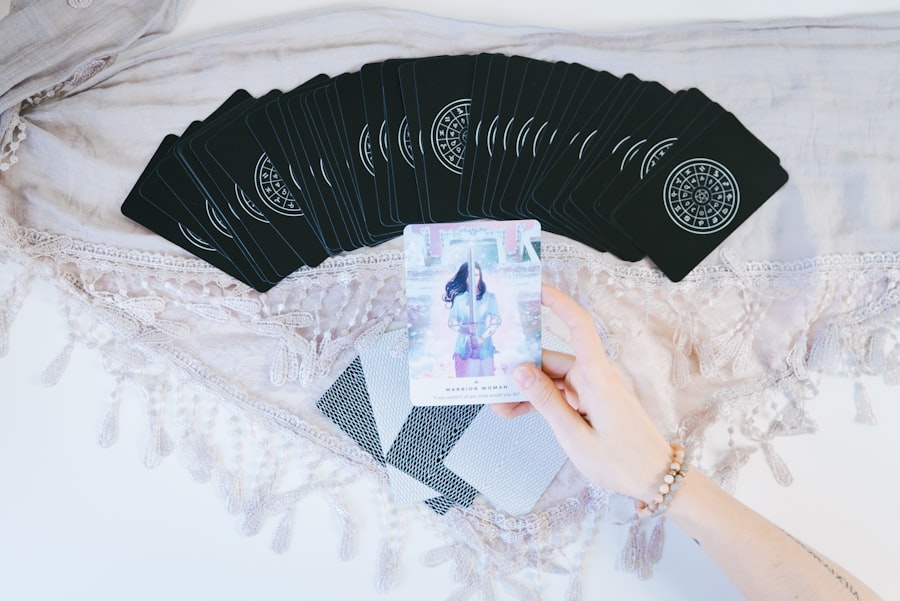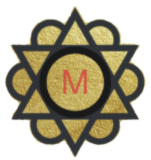
Tarot card reading is an ancient practice that has captivated the minds and hearts of many for centuries. At its core, tarot is a tool for introspection and self-discovery, allowing individuals to tap into their subconscious and explore the myriad possibilities of their lives. The tarot deck typically consists of 78 cards, divided into two main sections: the Major Arcana and the Minor Arcana.
The Major Arcana comprises 22 cards that represent significant life events, spiritual lessons, and archetypal themes, while the Minor Arcana consists of 56 cards that delve into the day-to-day experiences and challenges we face. Each card in a tarot deck carries its own symbolism and meaning, which can vary depending on the context of the reading and the intuition of the reader. The act of reading tarot is not merely about predicting the future; it is more about understanding the present and gaining insights into one’s life path.
The imagery on the cards often evokes deep emotional responses, prompting readers to reflect on their circumstances and consider new perspectives. This process can lead to profound revelations, helping individuals navigate their personal journeys with greater clarity and purpose.
Key Takeaways
- Tarot card reading is a form of divination that uses a deck of cards to gain insight and guidance.
- When choosing a tarot deck, consider the imagery, symbolism, and personal connection to find the right one for you.
- Learning the meanings of the cards involves studying the traditional interpretations as well as developing your own intuitive understanding.
- Developing intuition in tarot reading takes practice and patience, and it’s important to trust your instincts.
- Conducting your first tarot reading involves setting the right atmosphere, asking clear questions, and interpreting the cards with an open mind.
Choosing the Right Tarot Deck
Selecting a tarot deck is a deeply personal endeavor, as each deck resonates differently with individuals based on their unique preferences and spiritual inclinations. There are countless tarot decks available, ranging from traditional designs like the Rider-Waite-Smith to more contemporary interpretations such as the Wild Unknown Tarot or the Modern Witch Tarot. When choosing a deck, it is essential to consider not only the artwork but also the themes and energies that resonate with you.
Some decks may feature vibrant colors and whimsical illustrations, while others may adopt a more subdued or mystical aesthetic. It is also beneficial to explore the accompanying guidebooks that often come with tarot decks. These books provide insights into the meanings of each card, as well as suggested spreads and interpretations.
A deck that feels right in your hands and speaks to your inner self can enhance your connection to the cards and deepen your understanding of their messages. Visiting local metaphysical shops or browsing online marketplaces can provide opportunities to physically handle different decks before making a decision.
Learning the Meanings of the Cards

Once you have chosen a tarot deck, the next step is to familiarize yourself with the meanings of each card. This process can be both exciting and overwhelming due to the vast array of symbolism embedded within each card. A common approach is to start with the Major Arcana, as these cards often represent pivotal moments in life and carry significant weight in readings.
For instance, The Fool symbolizes new beginnings and potential, while The Tower signifies upheaval and transformation. Understanding these archetypes can provide a solid foundation for interpreting readings. In addition to memorizing card meanings, it is beneficial to engage with the imagery on each card.
Each illustration is rich with symbols that can offer additional layers of interpretation. For example, in The Empress card, one might notice symbols of fertility, abundance, and nature, which can evoke feelings of nurturing and creativity. Keeping a tarot journal can be an effective way to document your thoughts and interpretations as you learn.
By writing down your impressions of each card, you can create a personalized reference that reflects your evolving understanding of tarot.
Practice and Patience: Developing Your Intuition
Developing intuition is a crucial aspect of becoming proficient in tarot reading. While learning card meanings provides a framework for interpretation, tapping into your intuitive abilities allows for deeper insights during readings. One effective way to cultivate intuition is through regular practice.
Set aside time each day or week to draw cards for yourself or others, focusing on how each card resonates with you in relation to specific questions or situations. Over time, you will begin to notice patterns in your interpretations and develop a more instinctual understanding of the cards. Patience is equally important in this journey.
Tarot reading is not an overnight skill; it requires dedication and an openness to learning from each experience. As you practice, you may encounter moments of uncertainty or confusion regarding certain cards or spreads. Embrace these challenges as opportunities for growth rather than setbacks.
Engaging in meditation or mindfulness practices can also enhance your intuitive abilities by quieting the mind and allowing space for insights to emerge. The more you trust your instincts and allow yourself to be guided by your inner voice, the more confident you will become in your readings.
Conducting Your First Tarot Reading
Conducting your first tarot reading can be both exhilarating and nerve-wracking. To ease into this experience, consider starting with a simple three-card spread that represents the past, present, and future. This format allows for a clear narrative flow while providing insights into how past experiences influence current situations and future possibilities.
Before beginning the reading, take a moment to ground yourself by taking deep breaths or engaging in a brief meditation to center your thoughts. As you lay out the cards, take time to observe their imagery and reflect on their meanings in relation to your question or intention for the reading. It’s essential to approach this process with an open mind and heart, allowing your intuition to guide your interpretations rather than relying solely on memorized meanings.
As you articulate your insights, remember that tarot readings are inherently subjective; there are no right or wrong interpretations. Each reading is a unique exploration of energy and symbolism that can provide valuable guidance.
Seeking Guidance and Resources for Further Learning

As you embark on your tarot journey, seeking guidance from experienced readers and utilizing various resources can significantly enhance your understanding of this intricate practice. Online communities, forums, and social media groups dedicated to tarot can provide valuable insights, tips, and support from fellow enthusiasts. Engaging with others who share your passion can foster a sense of belonging while exposing you to diverse perspectives on card interpretations.
Books on tarot reading are also invaluable resources for deepening your knowledge. Titles such as “The Ultimate Guide to Tarot” by Liz Dean or “Seventy-Eight Degrees of Wisdom” by Rachel Pollack offer comprehensive insights into card meanings, spreads, and practical advice for readers at all levels. Additionally, attending workshops or classes led by experienced tarot practitioners can provide hands-on experience and personalized feedback on your readings.
These opportunities not only enhance your skills but also connect you with like-minded individuals who share your enthusiasm for tarot. In conclusion, embarking on a journey into tarot card reading opens up a world of self-discovery and insight. By understanding the basics of tarot, choosing the right deck, learning card meanings, developing intuition through practice, conducting readings with confidence, and seeking guidance from resources available in the community, you can cultivate a fulfilling relationship with this ancient art form.
If you are interested in exploring the symbolism and meaning of numbers, you may want to check out this article on Numerology Number 4. Numerology can provide valuable insights into your personality and life path, making it a fascinating subject to delve into alongside Tarot card reading. Understanding the significance of numbers can enhance your understanding of the Tarot cards and deepen your spiritual practice.
FAQs
What is tarot card reading?
Tarot card reading is a form of divination that uses a deck of cards to gain insight into past, present, and future events, as well as to gain guidance and advice on various aspects of life.
How does tarot card reading work?
Tarot card reading works by the reader shuffling the deck and then drawing cards at random. The cards are then interpreted based on their symbolism and the reader’s intuition to provide insight and guidance.
What do the cards in a tarot deck represent?
A standard tarot deck consists of 78 cards, which are divided into two main categories: the Major Arcana and the Minor Arcana. The Major Arcana cards represent significant life events and spiritual lessons, while the Minor Arcana cards represent day-to-day events and experiences.
Where can beginners start with tarot card reading?
Beginners can start with tarot card reading by familiarizing themselves with the meanings of the cards, practicing different tarot spreads, and developing their intuition. It’s also helpful to seek guidance from experienced tarot readers or to take a tarot card reading course.
What are some common tarot spreads for beginners?
Some common tarot spreads for beginners include the three-card spread (past, present, future), the Celtic Cross spread, and the simple one-card draw. These spreads can provide insight into different aspects of a situation or question.






